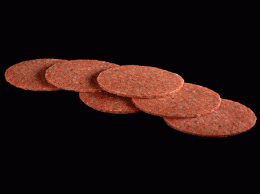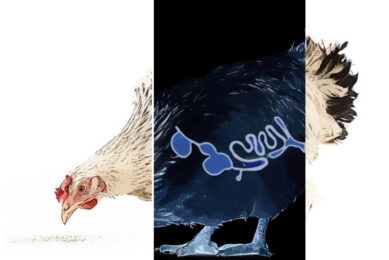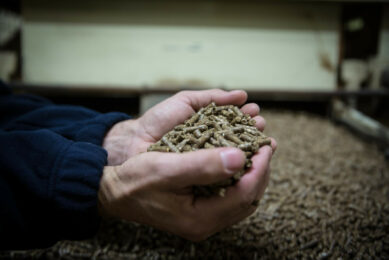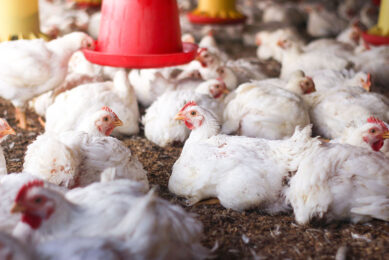Top 10 food safety news stories of 2009

Food Safety News, the web-based news outlet that covers all things food safety, has published its list of the top ten food safety stories of the year.
1 – E. coli in hamburger patties
Stephanie Smith, a children’s dance instructor from Minnesota was partially paralyzed from E. coli O157:H7 when she ate a hamburger (New York Times, Michael Moss).
Moss wrote: “The frozen hamburgers that the Smiths ate, which were made by the food giant Cargill, were labelled ‘American Chef’s Selection Angus Beef Patties.”
Yet confidential grinding logs and other Cargill records show that the hamburgers were made from a mix of slaughterhouse trimmings and a mash-like product derived from scraps that were ground together at a plant in Wisconsin.
The ingredients came from slaughterhouses in Nebraska, Texas and Uruguay, and from a South Dakota company that processes fatty trimmings and treats them with ammonia to kill bacteria."
Stephanie, whose spirit is inspirational, has sued Cargill for at least $100 million.
2 – E. coli in chocolate chip cookie dough
Nevada resident Linda Rivera was among those most severely injured by Nestlé chocolate-chip cookie dough contaminated with E. coli O157:H7.
Linda’s plight was described on Sept. 1 by the Washington Post, one of many times in 2009 that victims of food borne illnesses and their families summoned the courage to tell difficult but compelling stories. In doing so, they caught the attention of lawmakers and helped prompt the US House of Representatives to pass the 2009 Food Safety Act. However, the Senate has yet to approve S. 510, its version of proposed new federal powers and food-industry reforms.
3 – Salmonella in peanut butter
Peanut Corporation of America caused consumers pain and suffering, the government time and money, and was responsible for the most costly food recall in history – an amazing amount of damage for a small, largely invisible operation.
At least 3,918 separate products made with PCA peanut butter or peanut paste were recalled, costing food companies and the government more than $1 billion.
Now in bankruptcy with its entire operation shut down, PCA has yet to provide just compensation for those it sickened with Salmonella Typhimurium. The contamination led to nine deaths among the 714 confirmed cases of Salmonella in 46 states.
4 – Salmonella in ground beef
Salmonella contamination was once unheard of in ground beef recalls, but in 2009 there were three. The strains involved were Salmonella Typhimurium, Salmonella Newport, and Salmonella Typhimurium DT104.
These are all resistant to commonly prescribed drugs, meaning more victims had to be hospitalized and more treatments failed.
Just two companies (Denver based King Soopers and Fresno based Beef Packers) were responsible for a total of 587,000 tonnes of beef tainted with this dangerous Salmonella.
Cargill’s repeat performance in the scary Salmonella category is especially troubling because of its involvement up and down the food chain. For example, Cargill’s canola oil, which it sends to feedlots to fatten cattle, was banned from the United States in October because of Salmonella contamination.
5 – Insufficient testing of beef
USA Today showed that meat provided to school children not only does not "meet or exceed" standards for commercial products, but chains like Jack in the Box, Burger King, McDonald’s and Costco have far more rigorous standards than Uncle Sam.
The big retailers "test the ground beef they buy five to 10 times more often than the USDA tests beef made for schools during a typical production day," the newspaper reported. "And the limits Jack in the Box and other big retailers set for certain bacteria in their burgers are up to 10 times more stringent than what the USDA sets for school beef." USDA says it will work on the problem next year.
6 – Exposed to Hepatitis A
To say "mistakes were made" during an outbreak of a Hepatitis A at a McDonald’s restaurant in Milan, IL is putting it mildly. The local hospital testing a McDonald’s worker for Hepatitis A mailed – rather than faxing or phoning – the positive results to the Rock Island County Health Department. Then the letter went unopened for two weeks, apparently because someone was on vacation. Next, a McDonald’s manager did nothing after a food service worker told the franchise she had contracted Hepatitis A.
It was only when the Rock Island County Health Department figured out a McDonald’s worker had Hepatitis A that the restaurant was closed and cleaned, and the public informed. Meanwhile, 10,000 people had been exposed.
7 – Unpasteurized organic milk
Organic Pastures, the California company that has made raw milk a cause, is under a criminal plea agreement not to sell unpasteurized milk across state lines.
Late in 2009, the US Food & Drug Administration essentially sought to corral Organic Pastures when it went into federal civil court to make the agreement reached in the criminal proceedings permanent.
In response, Organic Pastures says it’s got its hands full trying to supply California outlets and no longer cares about fulfilling any orders it gets from the other 49 states.
8 – E. coli in ground beef
Ground beef contaminated with E coli is a story that never seems to end. In 2009, special notoriety goes to Colorado’s Greeley Beef Plant, now owned by JBS USA, and Fairbank Farms in Asheville, NY.
Each managed to offer at least 220,000 tonnes of E. coli-contaminated ground beef to an unsuspecting public. The June 24-28 JBS and Halloween Fairbank Farms recall were both associated with outbreaks of dangerous E. coli O157:H7 bacteria.
JBS is responsible for at least 23 confirmed cases in eight states and Fairbank Farms scored 26 confirmed cases in eight states. Not huge by E. coli outbreak standards, but all too typical.
9 – Melamine in baby milk
A Chinese court officially accepted the first lawsuit seeking compensation for that country’s 2008 tainted milk scandal, opening up the possibility of a flood of legal actions.
A district court in the northern city of Shijiazhuang will hear the suit filed against the Sanlu Group, the dairy firm linked to the poisoned milk controversy, by an unnamed parent of a child who was sickened.
At least six infants died and nearly 300,000 became ill last year by milk powder contaminated with the industrial chemical melamine, which was added to give the appearance of a higher protein content.
10 – List of riskiest foods
The Center for Science in the Public Interest’s release of a report on the 10 riskiest foods regulated by the US Food and Drug Administration sparked a full-fledged food fight.
Leafy greens, eggs and tuna topped the list, followed by oysters, ice cream, tomatoes and sprouts. The study, which analyzed 17 years of data from the Centers for Disease Control and Prevention and other sources, generated significant US media interest, buzz from blogs and local news outlets and drew harsh criticism from the food industry.
Food industry groups – especially those representing foods included in the report – criticized the findings and expressed concern that the publicity would hurt the industries listed.
Source: Food Safety News











